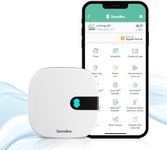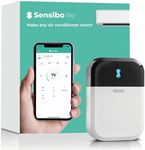Buying Guide for the Best Smart Air Conditioners
Choosing the right smart air conditioner can significantly enhance your comfort and convenience at home. Smart air conditioners come with advanced features that allow you to control the temperature and other settings remotely using your smartphone or voice commands. To make an informed decision, it's important to understand the key specifications and how they align with your needs. Here are the main specs to consider when selecting a smart air conditioner.Cooling Capacity (BTU)Cooling capacity, measured in British Thermal Units (BTU), indicates how much heat the air conditioner can remove from a room per hour. This is crucial because it determines the size of the room the unit can effectively cool. Units with lower BTU (5,000-8,000) are suitable for small rooms (up to 300 sq. ft.), medium BTU (8,000-12,000) for medium rooms (300-500 sq. ft.), and higher BTU (12,000-18,000) for larger spaces (500+ sq. ft.). Choose a unit with the appropriate BTU for your room size to ensure efficient cooling.
Energy Efficiency Ratio (EER)The Energy Efficiency Ratio (EER) measures the air conditioner's efficiency by comparing its cooling capacity to its power consumption. A higher EER means better energy efficiency, which can lead to lower electricity bills. EER values typically range from 8 to 12. For optimal energy savings, look for units with an EER of 10 or higher. Consider your usage patterns and energy costs when selecting an air conditioner with the right EER for you.
Smart FeaturesSmart features include Wi-Fi connectivity, app control, voice control compatibility (with assistants like Alexa or Google Assistant), and scheduling capabilities. These features provide convenience and flexibility, allowing you to control the air conditioner remotely, set schedules, and integrate it with other smart home devices. If you value convenience and tech integration, prioritize models with robust smart features.
Noise LevelNoise level, measured in decibels (dB), indicates how loud the air conditioner will be during operation. This is important for maintaining a comfortable environment, especially in bedrooms or living areas. Noise levels typically range from 40 dB (quiet) to 60 dB (louder). If you are sensitive to noise or plan to use the unit in a quiet space, look for models with lower noise levels.
Air Quality FeaturesAir quality features such as air purifiers, dehumidifiers, and ionizers can enhance the indoor air quality by removing pollutants, reducing humidity, and eliminating odors. These features are particularly beneficial if you have allergies, respiratory issues, or live in a humid climate. Consider your specific air quality needs when evaluating these additional features.
Installation TypeSmart air conditioners come in various installation types, including window units, portable units, and split systems. Window units are installed in a window and are ideal for single rooms. Portable units can be moved from room to room and are suitable for renters or those who need flexibility. Split systems are more permanent and can cool multiple rooms. Choose the installation type that best fits your living situation and cooling needs.





